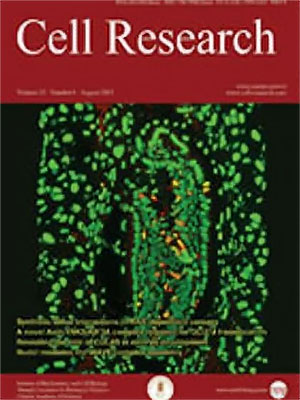
Volume 15, No 8, Aug 2005
ISSN: 1001-0602
EISSN: 1748-7838 2018
impact factor 17.848*
(Clarivate Analytics, 2019)
Volume 15 Issue 8, August 2005: 559-566
REVIEWS
Integration of light signaling with photoperiodic flowering and circadian rhythm
Min NI*
Department of Plant Biology, University of Minnesota, St. Paul, MN 55108, USA
Correspondence: Min NI(nixxx008@tc.umn.edu)
Versican belongs to the family of the large aggregating chondroitin sulfate proteoglycans located primarily within the extracellular matrix (ECM). Versican, like other members of its family, has unique N- and C-terminal globular regions, each with multiple motifs. A large glycosaminoglycan-binding region lies between them. This review will begin by outlining these structures, in the context of ECM proteoglycans. The diverse binding partners afforded to versican by virtue of its modular design will then be examined. These include ECM components, such as hyaluronan, type I collagen, tenascin-R, fibulin-1, and -2, fibrillin-1, fibronectin, P- and L-selectins, and chemokines. Versican also binds to the cell surface proteins CD44, integrin b1, epidermal growth factor receptor, and P-selectin glycoprotein ligand-1. These multiple interactors play important roles in cell behaviour, and the roles of versican in modulating such processes are discussed.
FULL TEXT | PDF
Browse 2184


